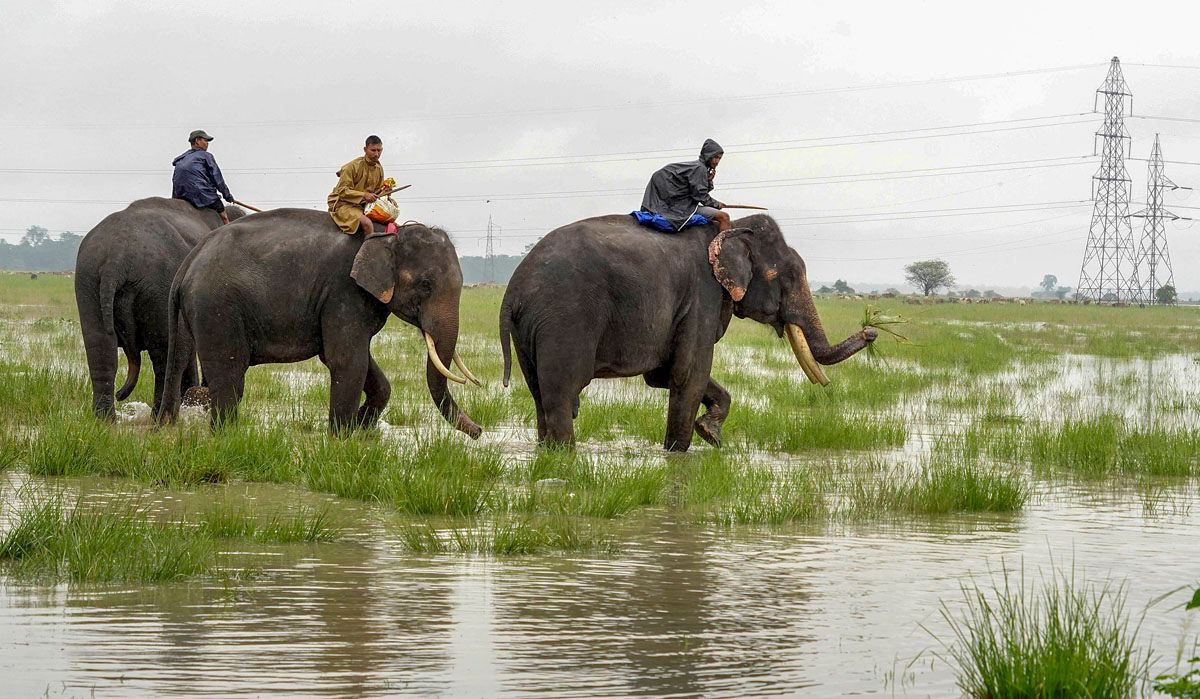India's environmental journey is currently at a turning point. An increasing ecological imbalance is being observed as we are making rapid strides in our infrastructural and technological developments. For a country whose 60 per cent of the population is dependent on agriculture, land degradation is found to be one of the main reasons for decreasing biodiversity and increasing social inequalities. As we observe World Nature Conservation Day, it is important to understand the need to integrate human communities with land conservation efforts while leveraging digital technologies for efficient use of our resources.
What it takes to make conservation efforts successful?
Effective conservation depends largely on support from local communities particularly from women and indigenous populations. This combined with technological interventions helps in creating a perfect fusion of traditional knowledge with contemporary techniques which allows preservation of flora and fauna of a particular area.
To understand this better, take the case of the Indian Rhino Vision initiative where with the help of technological support and community participation helped in restoring the population of rhinos in Assam. With the help of digital tools such as sophisticated sensors along with AI-powered picture recognition the local rhino population thrived from just a few hundred to about 3,000. Moreover, involvement of indigenous population has helped restore acres of vital land that was crucial for the habitat of these animals.
Similarly, in the Western Ghats, coffee growers are embracing the power of smartphone apps to protect biodiversity through shade-grown coffee practices. These innovative apps offer crucial guidance on sustainable farming methods and create direct links to markets that appreciate eco-friendly practices. In addition to improving the lives of these committed farmers, this digital assistance is essential to maintain the region's abundant biodiversity.
With apps like India Biodiversity Portal, the public can now take part in the documentation of biodiversity. Anybody with a smartphone may record and share observations of plants and animals which can help build a massive, crowdsourced database on biodiversity in India.
Furthermore, online marketplaces are facilitating the selling of forest goods that have been responsibly collected, supporting livelihoods that are friendly to conservation, and linking rural communities with metropolitan markets.
Promising advancements in agroforestry have been made possible by public-private partnerships, which give farmers access to current market pricing, weather forecasts, and sustainable farming methods. Online platforms are revolutionising knowledge sharing by facilitating the spread of traditional knowledge and best practices in conservation and agriculture among various communities and locations.
Stakeholders’ roles in preserving biodiversity
Any conservation effort usually involves a coordinated involvement of multiple stakeholders. While government plays a vital role in policy making, private sectors, local communities and social organisations help decide the correct and a balanced approach in utilising the resources of an area.
Government initiatives such as the National Mission for Green India and National Forest Policy have seen the government join forces with the NGOs and civil society groups to make great progress in ecological conservation as well as community capacity building. Digital tools are now being used to improve these activities, making monitoring and execution easier.
The involvement of the private sector is equally significant, especially when it comes to creating and implementing digital solutions. Companies are now individually financing ideas that help use of different digital platforms to link communities with conservation efforts. This enables the assessment of forest cover, species monitoring, and community engagement.
In Uttarakhand, the forest department is piloting an innovative mobile app to connect directly to communities and fire-fighting volunteers when it comes to the critical and time-sensitive issue of forest fires. The app allows vulnerable communities to both capture and report incidents to the department as well as receive real-time details of forest fire incidents, including the proximity of the fire to their location.
Apart from forming meaningful partnerships, it’s important to incentivise the local communities for their efforts. This can be done by setting up community-based tourisms, markets, or providing logistics support that can help run facilities that aid in conservation models. Moreover, ideas that provide an alternative to the consumption of conventional fuel and energy must also be encouraged so that the burden on natural resources can be reduced.
The road ahead
Presently, India is at the centre of the digital and economic revolution. While the world looks up to us for creative and unique solutions in technological progress, we have a lot more to offer. Gifted with a diverse and culturally rich background, our efforts should aim to produce ideas that are an amalgamation of traditional approaches and contemporary interventions.
With an agrarian society, India’s conservation of its land and biodiversity needs to coexist alongside technical advancement and community empowerment. We can create a model of sustainable improvement that preserves our natural heritage at the same time as constructing resilient, digitally empowered communities for a more egalitarian future.
The current boom in startups can also be a key driver of innovation in wildlife conservation. The government must promote innovations that focus on conservation technologies by providing support and incentives for startups. This includes fostering public-private partnerships and creating a conducive ecosystem for these startups to thrive and contribute to wildlife preservation.
We must keep in mind that technological innovation is a precious tool in our conservation toolbox. It needs to be used carefully, considering local circumstances, and work in tandem with traditional, community-centric conservation techniques. We can create a comprehensive and long-lasting conservation strategy by combining cutting-edge technology with time-tested conservation techniques and encouraging partnerships between governments, social organisations and startups.
This strategy will safeguard a greener future for future generations, empower local communities, and preserve our natural heritage.
(Shweta Rawat is the founder and chairperson of The Hans Foundation)



